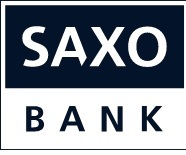
Saxo Q1 Outlook: Fuelling the energy crisis
Saxo Bank, the online trading and investment specialist, has today published its Q1 2022 Quarterly Outlook for global markets, including trading ideas covering equities, FX, currencies, commodities and bonds, as well as a range of central macro themes impacting investors and markets.
“Since late 2020, we have held the view that the real economy is far too small for the financial and economic agendas of governments, central banks and the green transformation.”, says Steen Jakobsen, Chief Economist and CIO at Saxo Bank, in the introduction to the Quarterly Outlook:
“The critical chokepoint for real economic growth from here is the de facto energy crisis we are experiencing—one that will only continue due to decades of underinvestment in the space and the continued lack of financing for the fossil fuel energy that still drives the bulk of energy inputs into our economy.
This lies at the centre of our “world is too small” theme. In 2021, we saw rises in energy and electricity prices that have not been seen since the 1970s. Electricity prices in Europe rose to ten times the long-term average, in part on supply disruptions from abroad, but also aggravated by the lack of baseload as Germany shutters nuclear plants and the new alternative energy sources are unable to replace critical baseload.”
Going green is fuelling the energy crisis
“In short, we have created a monster in which the policy priority—going green—is fuelling the energy crisis. The more we operate without a tangible plan for securing a smooth path to the hoped-for future of green energy, the more our economies will be disrupted in chaotic fashion due to inadequate baseload when famously inelastic energy demand exceeds generation capacity.
The policy response so far has been to propose an even deeper commitment to green energy and to ignore the required improvement in grids, transmission, and better use of conventional energy. The worst oversight by policymakers is the inability to admit the reality that alternative energy alone cannot power the future at current living standards.”. What the world needs is a Manhattan Project 2.0, this time not to build a bigger bomb, but to find and develop new higher-density, low-carbon energy sources, most likely based on nuclear fission and fusion.
The big revolution in 2022 will be to begin building our energy future on a foundation of realism, not fantasy.”
Equities: The energy crisis could turn energy stocks into a secular winner
“Last year a global energy crisis emerged slowly before exploding in the hands of Asia and Europe in the late part of the year, with European natural gas futures soaring 2,381 percent since May 2020. Higher energy prices—the main theme of this quarterly outlook—are a tax on consumers and businesses. They can push up consumer prices and shrink margins through higher direct operating expenses and secondary inflationary pressures hitting industries differently. They can also push interest rates higher, directly lifting the discount rate on future free cash flows and thus lowering equity valuations.
There are many reasons to believe energy prices will remain elevated for the foreseeable future due to underinvestment, ESG and the green transformation. This will entice investors to get exposure to the overall energy sector to balance their portfolio against an overweight in technology and growth stocks”, says Peter Garnry, Head of Equity Strategy at Saxo Bank.
Energy sector has diminished to an insignificant role in equity markets
“In January 1995, the energy sector had a 10 percent weight in the S&P 500 and was thus the fifth largest sector by market capitalisation in the world’s largest economy and equity market. From this onset the energy sector experienced an incredible boom period, peaking in June 2008 when the Brent crude price hit $140/barrel. During this period the global energy sector outperformed the global equity market by 7.5 percent annualised, delivering a total USD return of 16.2 percent annualised”.
Starvation of investments in the physical world
“There are many reasons behind the current energy crisis—some short-term and others long-term. Some of the most obvious are China’s U-turn on coal power, Germany’s abandonment of nuclear power, Russia’s geopolitical play, a global natural gas market through LNG, underinvestment in the supply of oil and gas, and extraordinary weather patterns reducing electricity production from hydro and wind turbines.”
Commodities supported by greenflation and tight supply
“We see another year where tight supply and inflationary pressures will support commodity returns. The decarbonisation of the world will increasingly create so-called greenflation, where rising demand and prices of commodities needed to support the process will be met by inelastic supply—partly driven by regulations such as ESG—prohibiting some investors and banks from supporting mining and drilling activities”, says Ole Hansen, Head of Commodity Strategy at Saxo Bank.
Energy: In Europe, the fragility of an energy market focused on decarbonising energy production has become increasingly apparent during the past six months. The result has been greenflation, driven by punitively high prices of gas and power prices putting heavy energy-consuming industries at risk while hurting consumers’ propensity to spend and to keep the economic recovery on track.”. Ole Hansen, Head of Commodity Strategy at Saxo Bank, continues:
“While gas is being viewed as the bridge between coal and renewables in Europe, Asia remains stuck with coal as a key source of energy, not least in China and India where surging power demand last year was met by increased demand for coal. As a result of this and despite the need to decarbonise the world, the amount of electricity generated worldwide from coal surged by an estimated 9 percent to a new record high in 2021. The International Energy Agency estimates that demand will reach a fresh record this year, at a level where it may stay over the following two years.”
Information Source: Read More–>
Oil and gas, press , | Energy, Climate, Renewable, Wind, Biomass, Sustainability, Oil Price, LPG, Solar, Electric,


